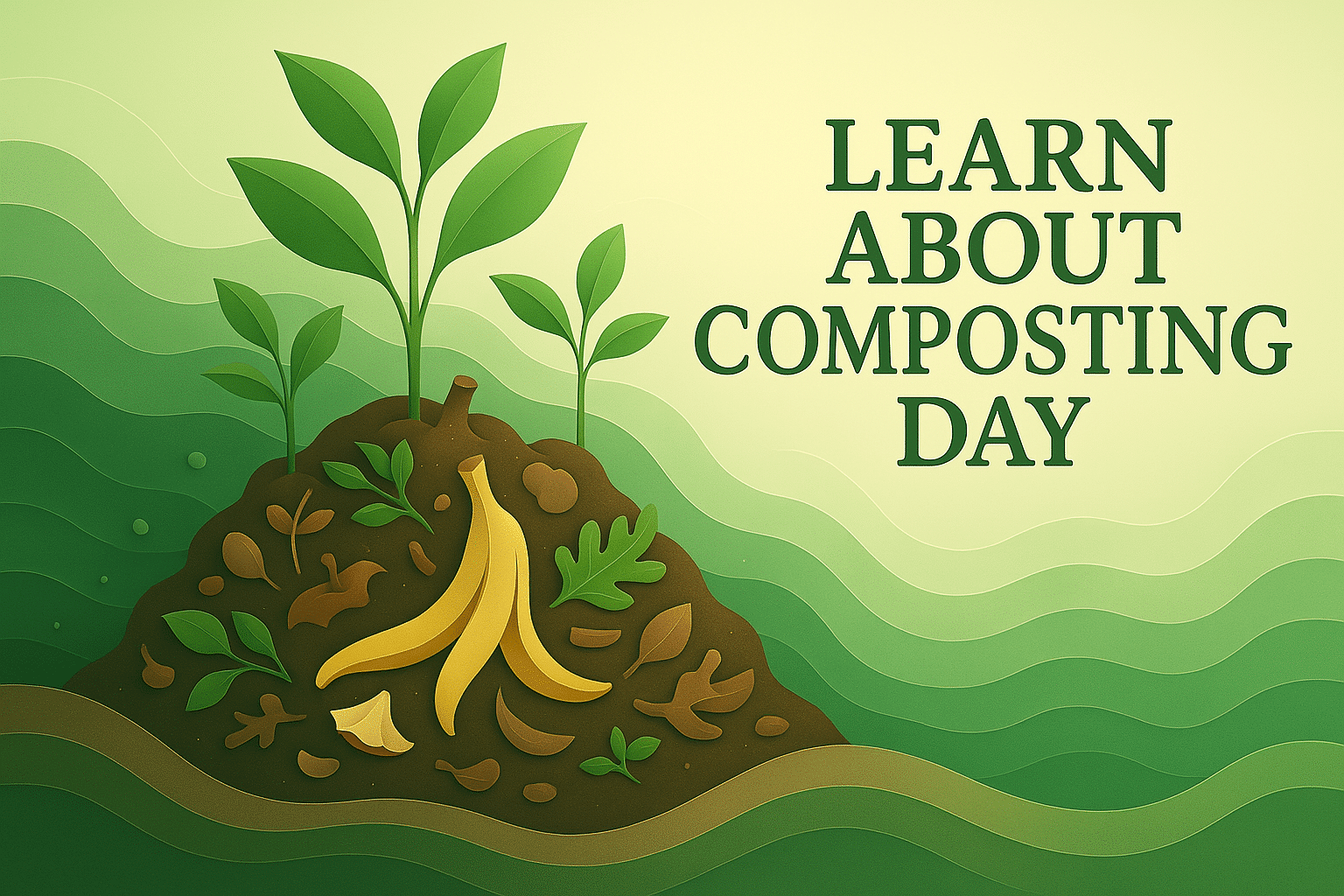What is National Learn About Composting Day?
National Learn About Composting Day is celebrated every year on May 29 in the United States. The day encourages people to explore composting;a natural method for recycling food scraps, yard waste, and other organic material into rich, fertile soil.
It’s a simple way to reduce waste, support local ecosystems, and improve your garden. Composting helps close the loop in nature, turning leftovers into life.
History and Origin
National Learn About Composting Day was created in 2011 by Bob Matthews, a gardener from Rochester, New York. His goal was to promote composting as a practical step toward a greener lifestyle. He introduced the day as part of a larger push for environmentally friendly living.
Since then, the day has gained support from environmental groups, schools, and community gardens. The focus is not just on making compost but on learning how it works and why it matters. From kitchen bins to large-scale operations, composting has become an everyday act of climate action.
Who Participates in National Learn About Composting Day?
- Gardeners: Enrich their soil with homemade compost and reduce reliance on chemicals.
- Sustainability advocates: Use composting to cut landfill waste and lower carbon emissions.
- Teachers and students: Include composting in science lessons and eco-friendly school projects.
- Community groups: Run compost drop-offs or workshops to help neighbours get started.
- Newcomers to composting: Use the day to learn, ask questions, and give it a try.
Slogans and Themes
Slogans include “Turn Waste Into Wealth” and “Nature’s Way of Recycling.” Themes often focus on soil health, food waste, and the beauty of slow transformation. Composting is framed not as a chore, but as a chance to give back to the earth.
Colors symbols and patterns
Colors
- Green: Represents nature, growth, and eco-friendly habits.
- Brown: Symbolises soil, decay, and the composting process.
- Dark orange: Reflects autumn leaves and food scraps, key compost ingredients.
Symbols
- Compost bin: The most recognisable icon of backyard composting.
- Worms: Especially for vermicomposting, they represent natural breakdown.
- Leaves and scraps: Depict the raw inputs that become compost.
Patterns
- Circular arrows: Show the loop of composting and renewal.
- Layered soil textures: Represent the stages of decomposition.
- Leaf scatter: Often used in posters to evoke the composting mix of greens and browns.
Most Used Hashtags
- #LearnAboutCompostingDay
- #CompostingDay
- #CompostAwareness
- #SustainableLiving
- #ZeroWaste
How to Celebrate National Learn About Composting Day:
- Start composting: Set up a bin or pile in your garden or kitchen to begin recycling organic waste.
- Join a workshop: Attend a local or online session to learn tips and best practices.
- Share the knowledge: Talk to friends or post about composting benefits on social media.
- Visit a garden: See how community plots or farms use compost in real life.
- Try a new method: Experiment with worm bins, tumblers, or indoor compost systems.
Why is National Learn About Composting Day Important?
Composting is a small act with big impact. It keeps food waste out of landfills, cuts methane emissions, and returns nutrients to the soil. It’s also easy, low-cost, and accessible to anyone with a bit of space or interest.
National Learn About Composting Day reminds us that nature has its own recycling system;and we can be part of it. Whether you’re growing vegetables or just want less trash in your bin, composting is a habit that makes a difference.
Features
May 29: Learn About Composting Day
Why do you keep falling for the same type?
Read the article Lovemaps: the hidden blueprint of our love.

